Along the Mongolian Trail
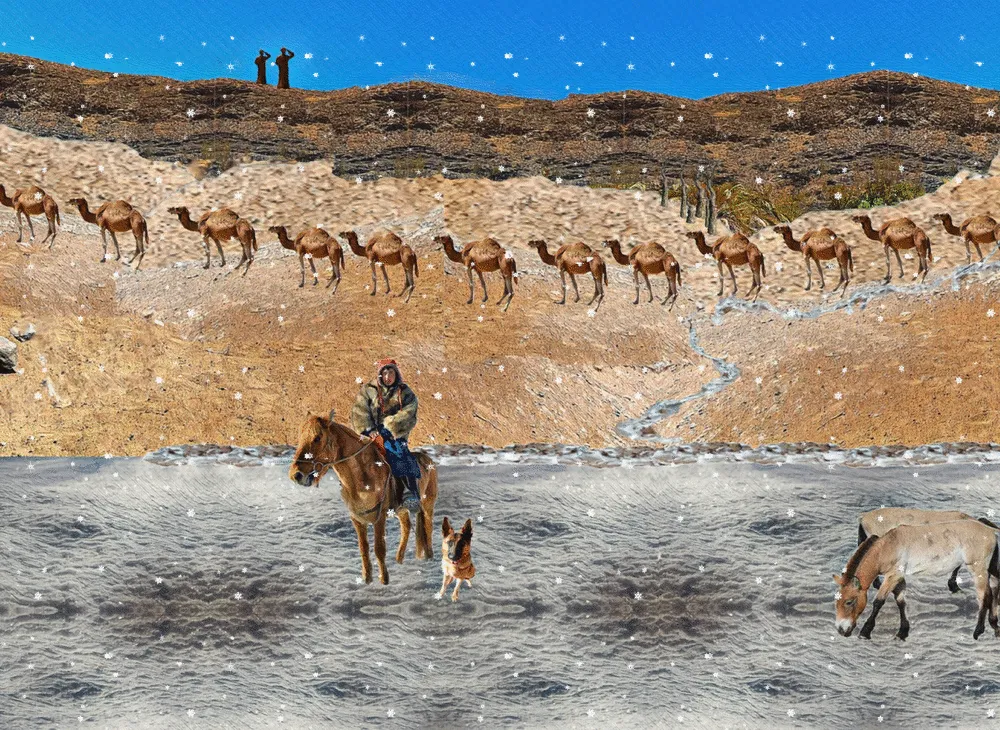
When I first saw this week's template photo (for LMAC #198) I thought of Mongols. This might not seem an obvious association for some, but several years ago I wrote a book about Mongolian rule in China (the Yuan Dynasty).
This week's template, by @shaka:
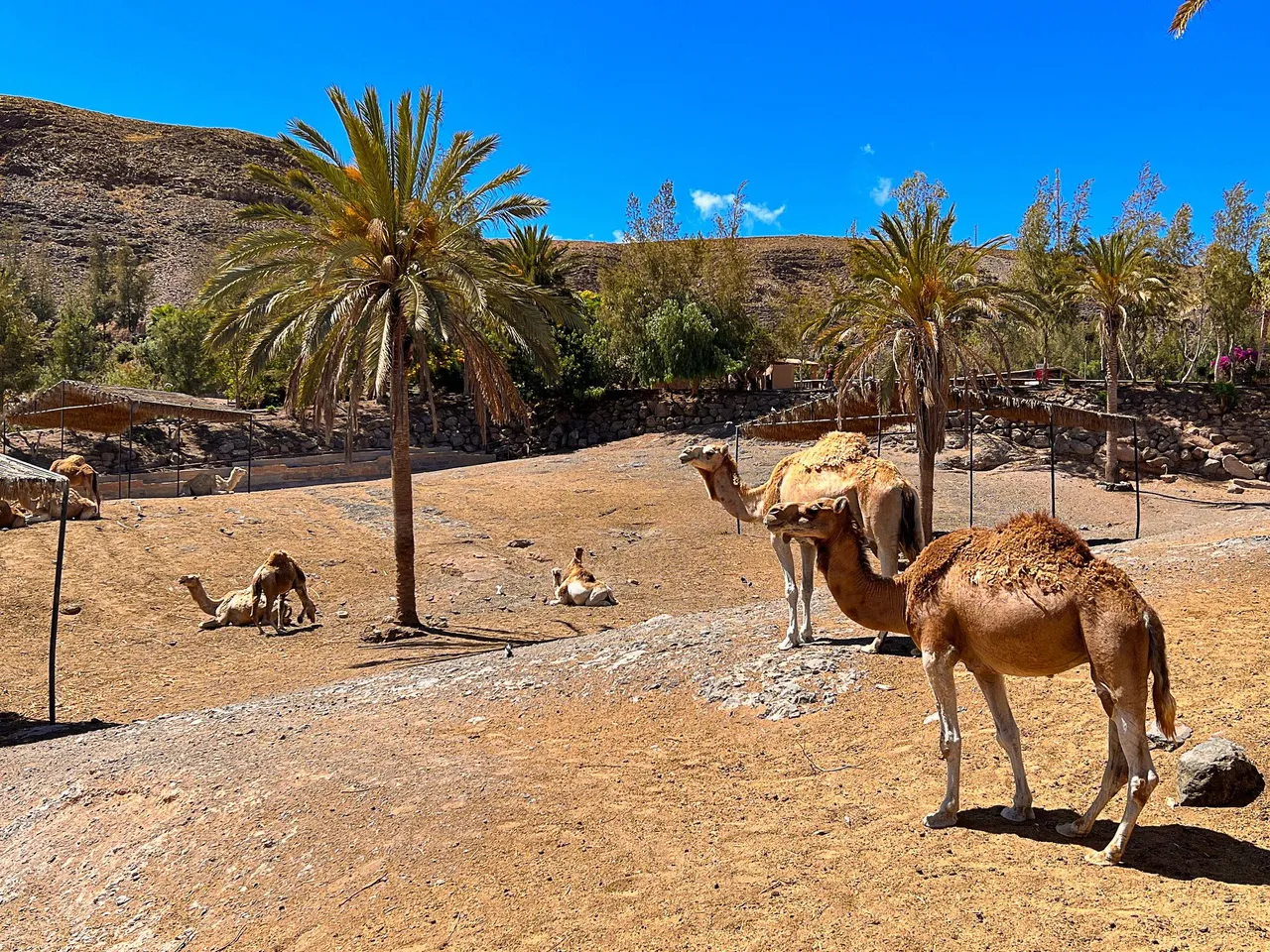
The mongols are famous for their horses. There is a story about Ögedei, son of Genghis Khan. It was said that when Ögedei conquered northern China he contemplated slaughtering all the people and turning the countryside into a grazing ground for his horses. Only the advice of his counselor,Yelü Chucai, saved the people of northern China. Yelü Chucai suggested that it would be more lucrative to keep people, because they could pay taxes.
Persuaded by this economic incentive, Ögedei decided to let the people of northern China live.
Ögedei Khan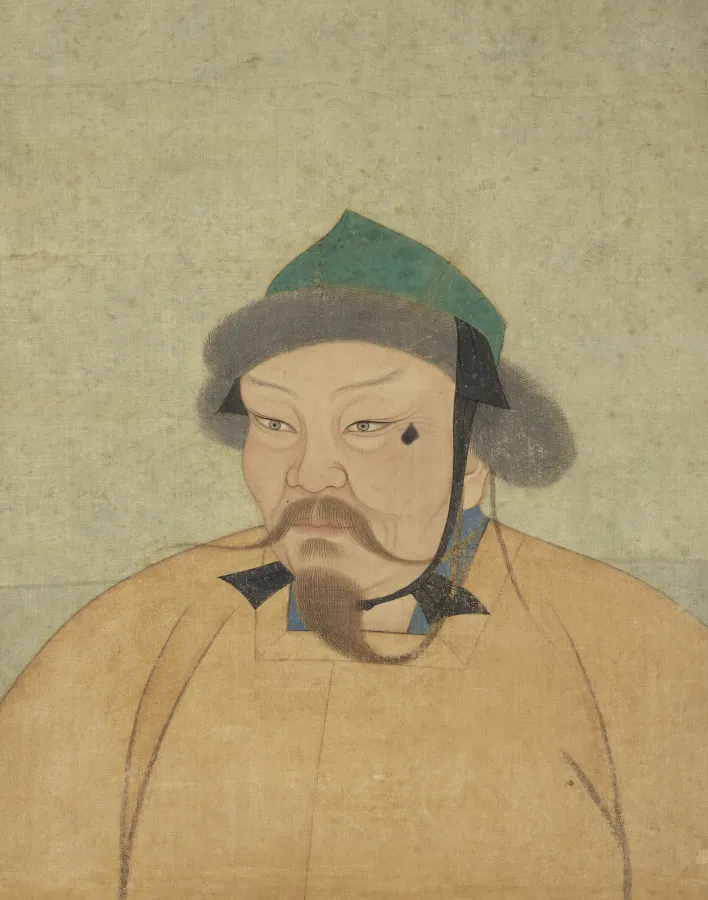
Credit: Anonymous. Painting, National Museum, Tapei China. 14th century. Public domain.
While the Mongols were devoted to their horses, they also relied heavily on camels. We generally associate camels with the desert, but they can also withstand the cold. Bactrian camels in Central Asia especially have been bred to tolerate extreme temperatures. During winter they grow a thick coat, which protects them from sub-freezing temperatures. In summer, when the heat soars, they shed their heavy coats.
Mongols also valued dogs. The Bankhar dog has been around for thousands of years. It guided livestock and warned if strangers approached. It was important for keeping wolves and other predators away from the livestock.
Today the Bankhar dog is quite rare. There is a project afoot to breed the dog and reintroduce it to traditional herders, who need the animal to protect their livestock. Here is a brief YouTube video that shows the dog and explains its traditional importance in Mongolian culture.

I tapped public domain sources and contributors in the LIL library (LMAC gallery of images).
https://pixabay.com/photos/mongolia-gobi-camels-steppe-mammal-695267/
Figure on the mountain
https://pixabay.com/photos/mongolia-gobi-camels-steppe-mammal-695267/Horseman
https://pixabay.com/photos/horseman-mongolian-horse-asia-1285018/Horses
https://pixabay.com/photos/przewalskis-horses-zoo-horses-7559888/
Snow
https://pixabay.com/photos/snow-winter-frozen-freeze-6005330/Stream
https://pixabay.com/photos/mountains-sky-river-stream-water-5435903/
Tree
@muelli
https://www.lmac.gallery/lil-gallery-image/8112Dog
@yaziris
https://www.lmac.gallery/lil-gallery-image/7639
I used several important elements from @shaka's template: the desert, the mountains in the background, the camels and the sky. Piecing these together, with added elements, was a matter of cut and paste but eventually the collage became what I imagined. The final bit that helped to 'sew' the piece together was something that seemed insignificant--the stream.
This:

Became this:
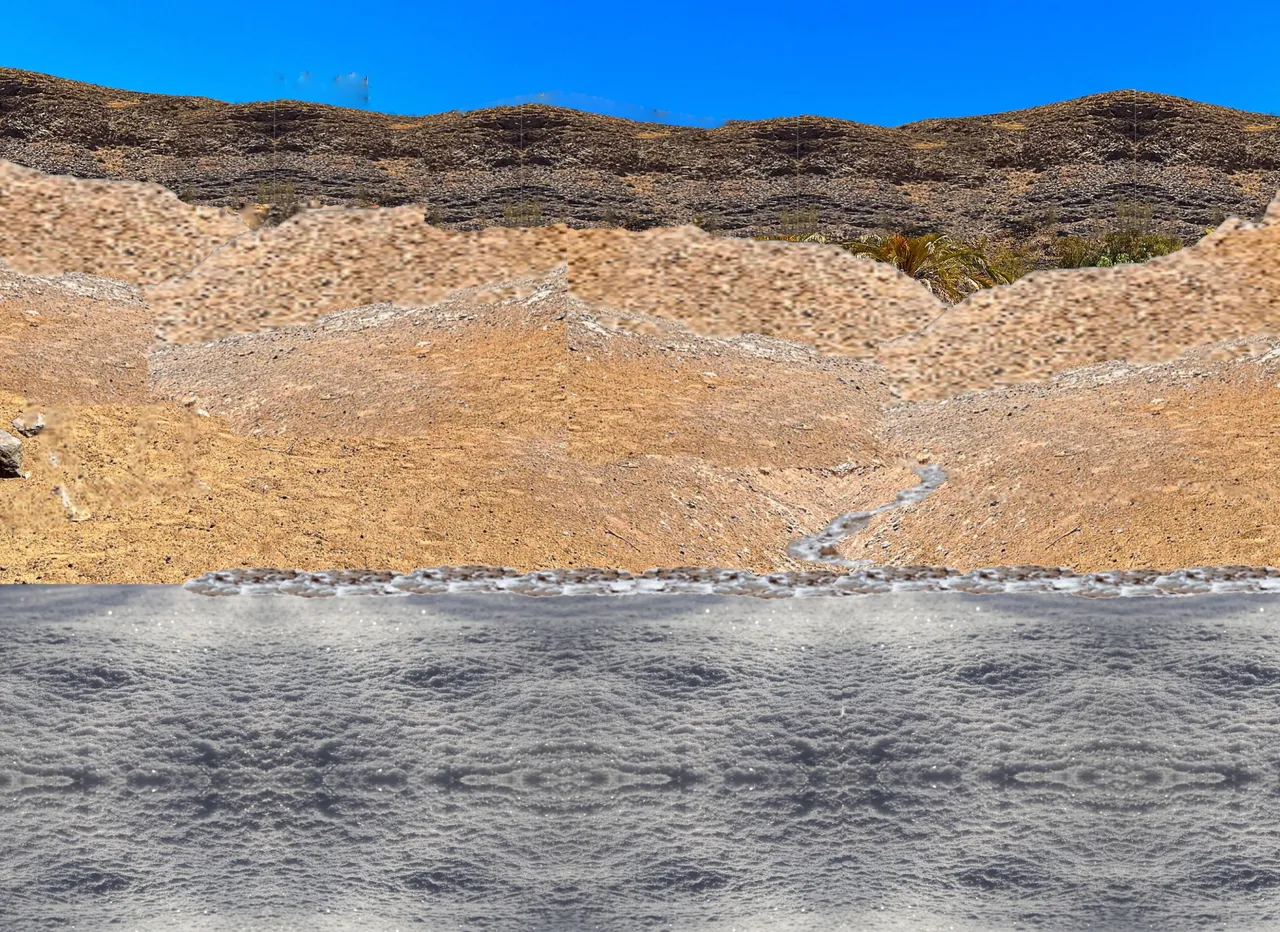
And then this:
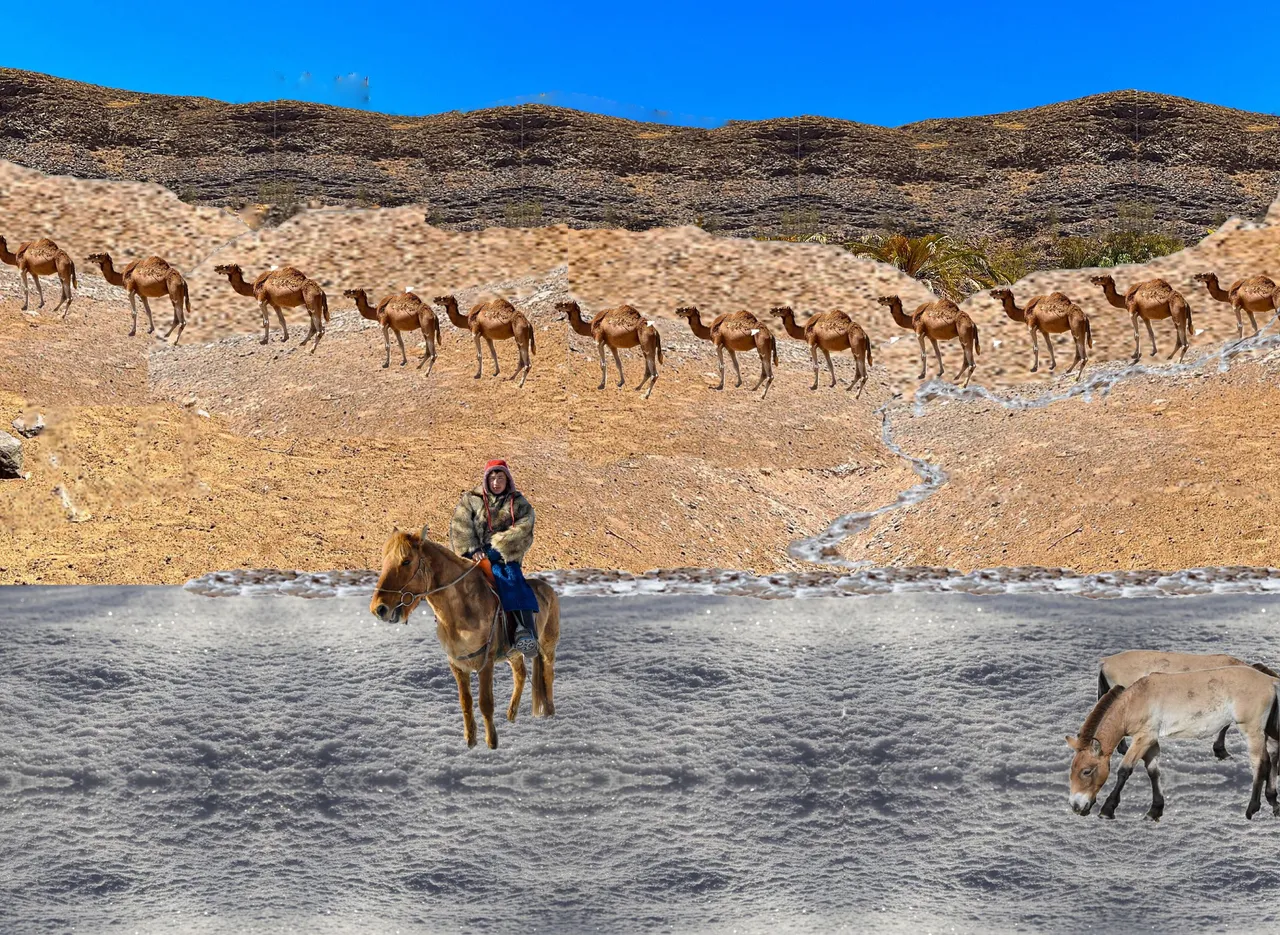
A few more flourishes, and then a final snow filter from Lunapic, and I was ready:

LIL is not only a valuable image resource for the Hive community, but is also a way for community members to participate in LMAC. Anyone on Hive can contribute to the library and everyone can borrow from it. Learn about the procedure here.
Every week we offer prizes to fifteen finalists in the contest, but it's not only the prizes people create for. I, for example don't compete, but spend hours giving vent to my imagination. Others in the community have developed the habit of 'speaking' through collage.
As @shaka has said many times, everyone is an artist. I may not be an artist in the technical sense, but LMAC allows me to nurture my own unique artistic voice.
Thank you for reading. Peace and health to all.